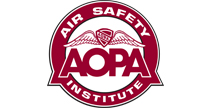Lost in a snowstorm
(NYC03LA076)
 As countless holiday songs will attest, there’s a picturesque beauty to falling snow. But the fluffy white stuff of Bing Crosby’s dreams can be downright nightmarish for a noninstrument-rated pilot flying cross-country. Sudden snow squalls can reduce visibility to near zero, quickly plunging the flight into instrument conditions. The disorienting experience can turn a VFR-only pilot’s entire world upside down. Literally.
As countless holiday songs will attest, there’s a picturesque beauty to falling snow. But the fluffy white stuff of Bing Crosby’s dreams can be downright nightmarish for a noninstrument-rated pilot flying cross-country. Sudden snow squalls can reduce visibility to near zero, quickly plunging the flight into instrument conditions. The disorienting experience can turn a VFR-only pilot’s entire world upside down. Literally.
On March 31, 2003, a Cessna 172P flew into an unforecast snowstorm near Shenandoah, Va. The pilot attempted to divert to a nearby airport, but couldn’t find it in the blinding squall. With visibility continuing to decrease, he performed a precautionary landing in a muddy field. The Skyhawk came to rest inverted and was substantially damaged, but the pilot and passenger survived the ordeal uninjured.
The flight had departed Syracuse Hancock International Airport in Syracuse, N.Y., and was bound for Piedmont Triad International Airport in Greensboro, N.C. At 9:25 a.m. on the day of the accident, the noninstrument-rated pilot called the Buffalo Flight Service Station to request a standard weather briefing and file a VFR flight plan. The forecast called for early-afternoon showers in southern Pennsylvania but did not mention snowstorms near Shenandoah, Va.
At approximately 1:45 p.m., the pilot encountered snow showers while cruising at 4,500 feet msl. He attempted to divert to Shenandoah Valley Regional Airport, about 23 nautical miles to the southwest, but could not locate the airport. As the forward visibility dropped further, the pilot decided to perform a precautionary landing in a field. When the Skyhawk touched down, the landing gear struck mud and the aircraft flipped over. The nose gear, propeller, both wings, and the vertical stabilizer were substantially damaged, but the pilot and passenger were not injured.
The NTSB attributed the accident to the pilot’s inadvertent encounter with snow showers. Factors in the crash included the snow and the unsuitable landing area.
Winter weather can be difficult to predict, and it presents a variety of challenges for the GA pilot, particularly when precipitation is involved. Ice can quickly accumulate on the airframe, often with disastrous consequences. Sleet and snow, on the other hand, generally don’t adhere to moving aircraft but can dramatically reduce visibility and quickly disorient a pilot relying on visual references.
Noninstrument-rated pilots who encounter moderate to heavy snow in flight should immediately reverse course and return to VFR conditions. Diverting to an alternate airport is a wise choice—unless it happens to lie nearly 25 miles ahead of you. By choosing Shenandoah Valley Regional as his diversion point, the accident pilot was forced to continue straight ahead into rapidly deteriorating conditions. He realized his mistake when the airport became impossible to find.
With no runway in sight and facing a dizzying world of white, the pilot made the difficult but wise decision to set the Skyhawk down off airport. The statistics support his choice: About 90 percent of spatial disorientation accidents are fatal, whereas only 10 percent of emergency landings involve a fatality. A safe outcome is directly proportional to the amount of control a pilot maintains over the airplane. Being upside down in a muddy field, while certainly unpleasant, is always better than being upside down at 4,500 feet.